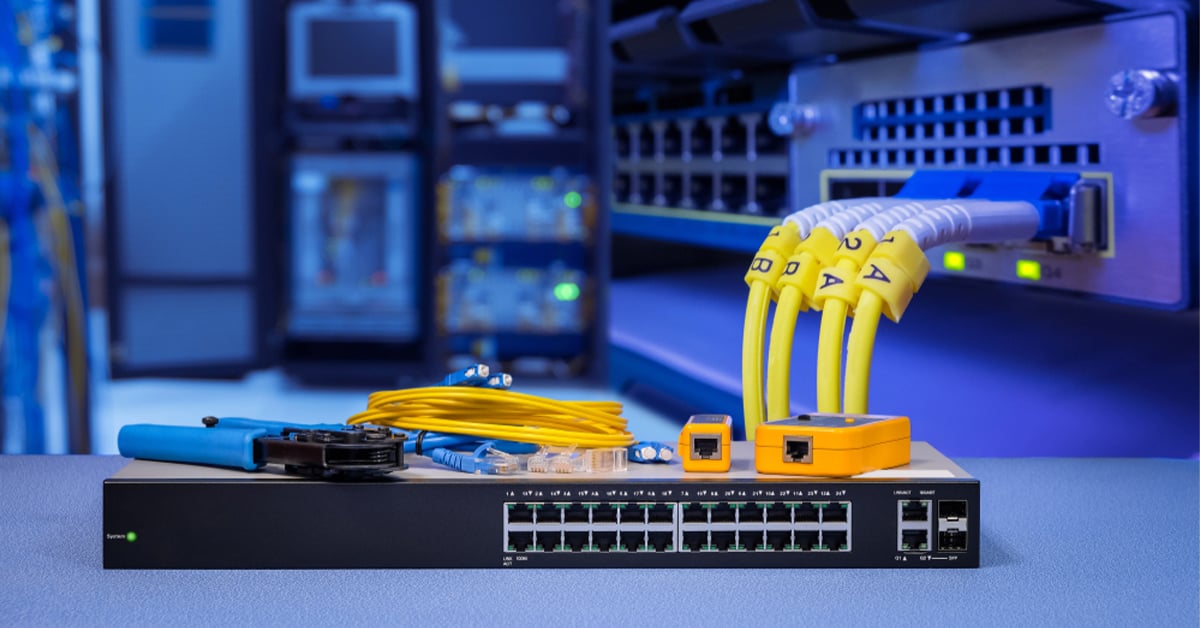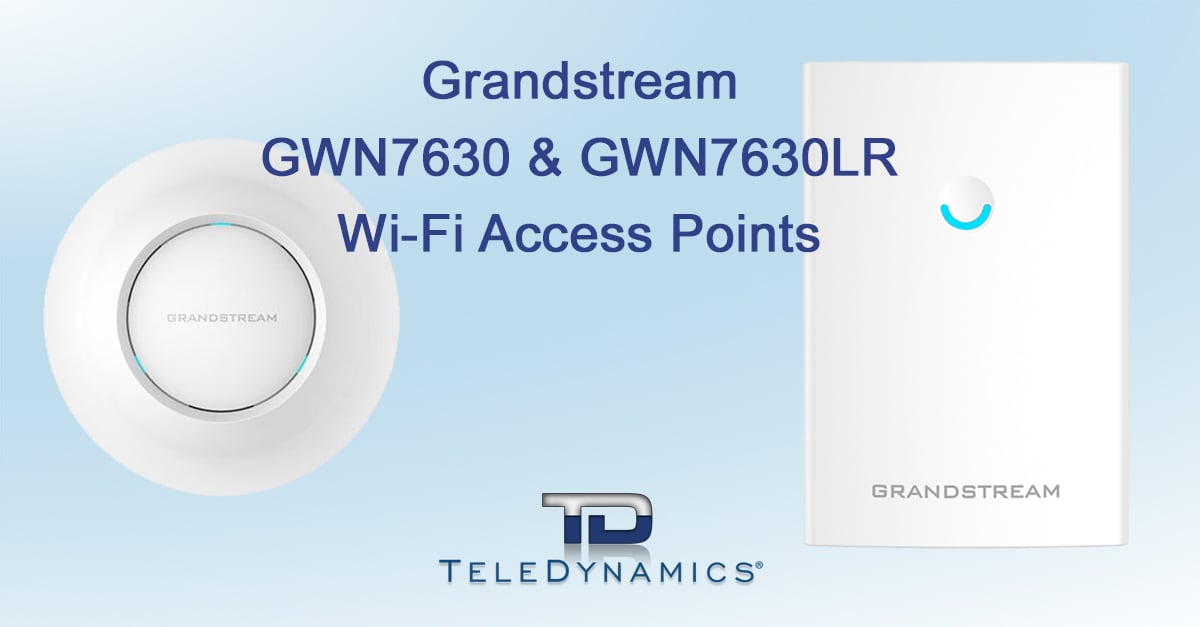Telephony solutions come in all shapes and sizes and can be customized to suit the specific needs of each individual business. But with so many choices, it can be confusing for customers to distinguish between the various options available. This is no less the case when it comes to choosing a VoIP service.
TeleDynamics Think Tank
SIP trunks vs SIP extensions: Which to choose?
Topics: VoIP, SIP, Network Design, Cloud, WAN Technology
Jitter is one of the most common causes of substandard voice communications over IP networks. This article provides an overview of jitter and how it influences voice applications, as well as methods for resolving it on your networks.
Topics: QoS, VoIP, Troubleshooting, Network Design, Unified Communications
Equipping employees to use their enterprise IP phones at home
With more employees working from home to comply with social distancing measures currently in place, TeleDynamics has been getting a lot of requests for help with getting employees operational from home. In this article, we will review a number of ways you can enable an employee to use their company IP phone from home, as well as other methods for making and receiving calls without the need for special hardware.
Topics: SIP Phones, Mobility (including remote work), Mobile, Cloud, Voicemail, Switches, Microsoft
13 remote collaboration solutions for a dispersed workforce
Amidst government-imposed social distancing, many companies are beefing up their remote collaboration capabilities. With this in mind, here we review some of the recent solutions that we have featured on our Think Tank to help you choose the best-suited conferencing solutions for your customers. Specifically, we look at softphones, videoconferencing solutions and conference phones.
Thanks to the versatility and cost-effectiveness of VoIP, remote collaboration has never been more robust or easier to use than it is today. Even micro- and small businesses can afford technology that allows their workers to meet and engage with each other without having to be in the same place.
Break free from cords with the Snom C620 conference phone
Dealing with pesky cords is a common frustration of conference phones. If you want to place the phone in the middle of a conference room, you either need an electrical outlet located in the middle of the floor, or you need to bring in an extension cord. And then you need to be careful not to trip over it!
That’s why we love the Snom C620 conference phone. It uses DECT 6.0 technology for a completely wireless conferencing experience. Even the detachable microphones are cordless, allowing for more effective collaboration without the frustration factor. In this article, we take a look at this robust and flexible conferencing device.
Topics: Wireless, SIP, Cordless, DECT, Conferencing, Product Review, Snom
Wouldn’t it be great to have superhero X-ray vision that allows you to understand, in a single glance, what is going on with the voice traffic on your network? In fact, it is possible to do so using the Simple Network Management Protocol (SNMP). In this article, we take a look at this protocol and highlight the special features it has up its sleeve to help you with your VoIP monitoring needs.
Topics: QoS, VoIP, Troubleshooting, Protocols & codecs
How to capture voice packets for troubleshooting VoIP
One of the best methods for troubleshooting problems on the network to pinpoint the cause of poor voice quality or a disruption of VoIP services is to capture voice packets in real time and store them so we can analyze them later. When people call TeleDynamics tech support, we sometimes ask them to show us their packet capture files so we can help identify the issue. In this article, we examine practical methods for capturing voice packets at various locations within the network.
Topics: VoIP, Troubleshooting
Couldn't make ITEXPO in Ft. Lauderdale last week? Here's a recap.
This year at ITEXPO we saw a number of new events and happenings. There was a good attendee and exhibitor turnout, despite the fact that all of the Chinese factories and representatives were unable to attend due to the coronavirus. Nonetheless, the products and services from these manufacturers were on full display. The attendees expected nothing less from the #TECHSUPERSHOW!
Topics: VoIP, Trends, Network Security, Events, SD-WAN, IoT, Unified Communications
Troubleshooting poor voice quality on VoIP systems
One of the most challenging problems that you may face as a voice engineer is dealing with poor voice quality on VoIP systems. It’s often much easier to deal with problems where something stops working completely, rather than trying to resolve an intermittent fault such as bad voice quality.
Many things can cause poor voice quality, and the methodology to investigate those causes is not always readily clear. In this article, we’ll share some tips on where to start and what to do, so that you can quickly identify and diagnose the problem.
Topics: Business Telephone System, VoIP, Troubleshooting
Why you need Grandstream’s GWN7630 & GWN7630LR APs in your Wi-Fi deployment
Grandstream, a leader in SIP communication solutions, emerged into the networking solutions space in the fall of 2016 with a new line of Wi-Fi devices. As Grandstream has upgraded firmware, implemented new features and added new products to this line, it has proven to be a mainstay product category for Grandstream and we are excited to review two of their new access points, the GWN7630 and GWN7630LR!
Topics: Grandstream, Product Review, Wi-Fi
Welcome to our Think Tank
In this blog you'll read our thoughts on business telephone systems. While a lot has changed in telecom since TeleDynamics was founded in 1981, we remain as committed as ever to delivering the best customer service in the industry.
If you would like elaboration on a specific topic, please let us know in the comments section.
Happy reading and thanks for stopping by!
Receive New Articles by Email

Recent Posts
Posts by Topic
- 5G
- AI
- Android
- Avaya
- Bluetooth
- Boom Collaboration
- Business Continuity
- Business Strategy
- Business Telephone System
- Case Study
- Catalog
- Cisco
- Cloud
- Collaboration
- Communication
- Conferencing
- Cordless
- CPaaS
- Customer Service
- Customer Success Story
- CyberData
- DECT
- E911
- Events
- Facility Management
- Firewall
- Firmware Upgrades
- FoIP
- Gateway
- Grandstream
- Headsets
- Home Security
- IoT
- IP PBX
- Jabra
- Konftel
- Leasing
- Microsoft
- Mobile
- Mobility (including remote work)
- NEC
- Network Design
- Network Infrastructure
- Network Security
- News
- OTT VOIP
- Outsourcing
- Panasonic
- Peripherals
- PoE
- Polycom
- Power Management
- Product Review
- Productivity
- Protocols & codecs
- QoS
- Regulations
- Routers
- SD-WAN
- SIP
- SIP Phones
- Snom
- Software Integration
- Surveillance
- Switches
- Total Voice Solution
- TP-Link
- Trends
- Troubleshooting
- UCaaS
- Unified Communications
- Videoconferencing
- VLAN
- Voicemail
- VoIP
- VoWi-Fi
- VTech
- WAN Technology
- Wi-Fi
- Wireless
- WISP
- Yealink
- Yeastar
- Zoom











_1200x627.jpg)




